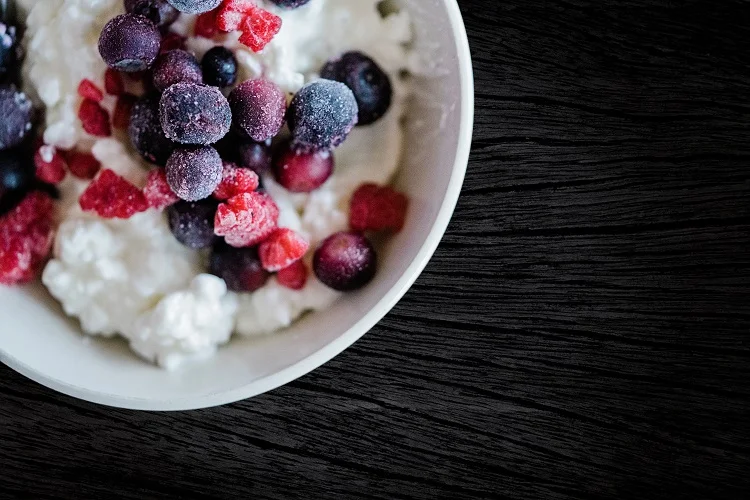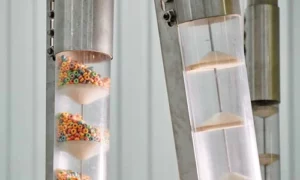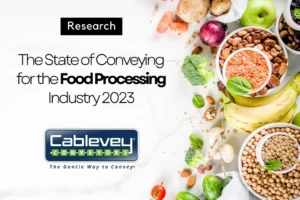Industrial conveyors have forever altered the way we move goods and products around. By replacing manual labor with a mechanized system, they can move more goods faster and with more precision. And while there are many types of these systems in existence, each serving a different purpose, frozen food conveyor systems are designed specifically for the transportation of frozen foods. Let’s take a closer look at what they do and why you should utilize them in your production line.
What Are Frozen Food Conveyor Systems?
Frozen food conveyor systems are integral parts of the industrial food manufacturing process, specifically designed to transport frozen goods through various stages of production in a controlled, efficient, and hygienic manner. These systems might include various conveyor belt types, such as mesh belts or solid steel belts, depending on the specific needs of the production line.
They are typically built to withstand extreme temperatures and often incorporate defrosting, sorting, weighing, and packaging components. Additionally, they’re designed to comply with strict food safety regulations, as the prevention of cross-contamination is crucial in frozen food manufacturing. With the help of these systems, frozen food industries are able to maintain consistent quality, increase production capacity, and achieve operational efficiency.

An Overview of the Frozen Food Industry
Frozen food is defined as any food that is kept at a temperature below its freezing point. According to product type, we can divide these products into several categories:
- Frozen meat and seafood,
- Frozen fruits and vegetables,
- Frozen dairy products (ice cream, yogurts),
- Frozen bakery products (pies, pastries, bread, pizza crusts),
- Frozen ready meals and convenience food,
- Frozen desserts.
The global frozen food market is expected to reach USD 389.90 billion by 2030, growing at a CAGR of 5.1% from 2022 to 2030. Currently, Europe represents this food’s largest market, but Asia-Pacific is expected to witness the highest growth over the forecast period.
Unlike many other industries that have experienced a slowdown due to the COVID-19 pandemic, the frozen food industry has actually seen a surge in demand. This is likely due to the fact that people have been cooking at home more often and stocking up their pantries with long-lasting staples.
Market Drivers and Restraints
The one major restraint that’s impacting the growth of the frozen food market is the public perception that these products are not as fresh or healthy as fresh food, especially when it comes to fruits and vegetables. Many still prefer to buy fresh produce, even if it means spending more time cooking meals from scratch. However, even this restraint is slowly being overcome as people are becoming more aware of the benefits of frozen food and the fact that it can actually be fresher than fresh produce, as it’s frozen at the peak of ripeness.
On the other hand, there are several factors that are driving the growth of the frozen food industry. These include:
- In today’s fast-paced world, people are increasingly looking for food that is easy to prepare and doesn’t require a lot of time or effort. Frozen foods fit this bill perfectly, as they can be quickly heated up and don’t need to be cooked from scratch.
- As people’s incomes grow, they are more likely to spend on convenience items, such as frozen foods.
- With the advancement of technology (especially frozen food conveyors), it has become easier to store and transport frozen food. This has made it possible for manufacturers to reach a larger number of consumers.
Market Challenges
There are still various opportunities for the frozen food market to expand, especially in developing regions such as Latin America and South Africa. In these regions, the demand for frozen food is growing, but the infrastructure needed to store and distribute it (such as cold storage facilities and conveyor systems) is not yet in place. This presents a challenge for manufacturers who want to enter these markets.
Another challenge the market faces is the increasing need to innovate and keep up with the latest food trends. Consumers are becoming more health-conscious and are looking for healthier options, such as gluten-free, low-sugar, and organic foods. To meet this demand, manufacturers need to continuously come up with new products that meet these criteria.
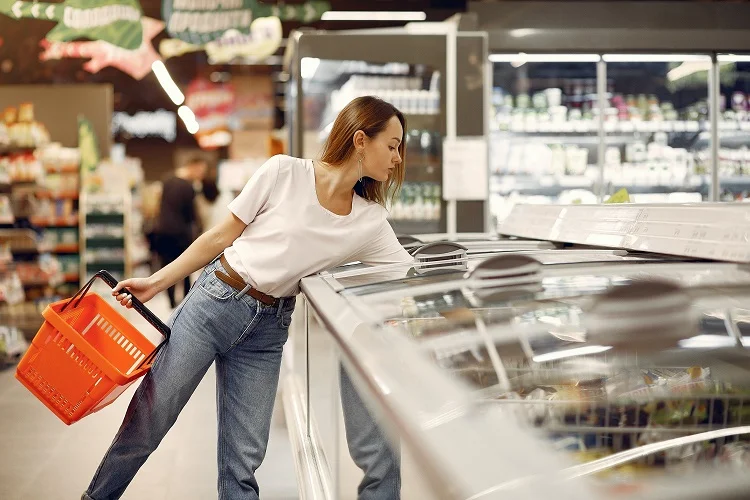
How Can Your Business Stand Out?
In the highly competitive landscape of the frozen food market, standing out requires a blend of quality, innovation, and strategic marketing. Thankfully, there are several actions your business can take to stand out in this increasingly competitive landscape and earn your brand some notable recognition.
As we mentioned earlier, one of the challenges that the frozen food industry faces is the need to constantly innovate and keep up with the latest food trends. To stay ahead of the curve, it’s important to be on the lookout for new trends and to develop products that meet the latest demands. At the moment, these trends are centered around organic, plant-based food options.
In order to convince people to buy your frozen food products, you need to invest in marketing and make sure that your target consumers are aware of your brand. You can do this by investing in advertising, social media marketing, and public relations.
By investing in state-of-the-art freezing, transport, and storage facilities, you can ensure that your products are of the highest quality and can reach your consumers in perfect condition. This last point, especially, is essential if you want to succeed in the frozen food market. With the right technology – which includes conveyor systems – in place, you can ensure that your products are stored and transported properly, making them more likely to reach your consumers in impeccable condition.
Challenges of Conveying Frozen Food
To better understand how a specialized frozen food conveyor system can benefit your business, it’s important to be aware of the challenges that come with conveying these products.
- Fragile or delicate products – frozen food, particularly fruits and vegetables such as berries, are delicate products that can be easily damaged during the conveying process. Damaged product leads to increased product waste, which in turn leads to higher production costs.
- Food safety regulations – food processors cannot afford to have their products contaminated during transportation. Without a conveying system that follows the strictest sanitary regulations, there is a risk of cross-contamination, which can lead to product recalls and serious damage to your brand’s reputation.
- Low-temperature operation – one of the challenges of conveying these products is that they need to be kept at a constant low temperature throughout the entire process. If the product warms up even for a short period of time, it can lead to product deterioration and, ultimately, food waste.
- Frequent line changeovers – it isn’t uncommon for frozen food manufacturers to need to change their production lines frequently. This can be due to seasonal changes or the introduction of new products. Without a conveyor system that is easy to change and adapt, this process can be time-consuming and expensive.
The right frozen food conveyor system can help you overcome these challenges and ensure that your products are conveyed efficiently, safely, and cost-effectively.
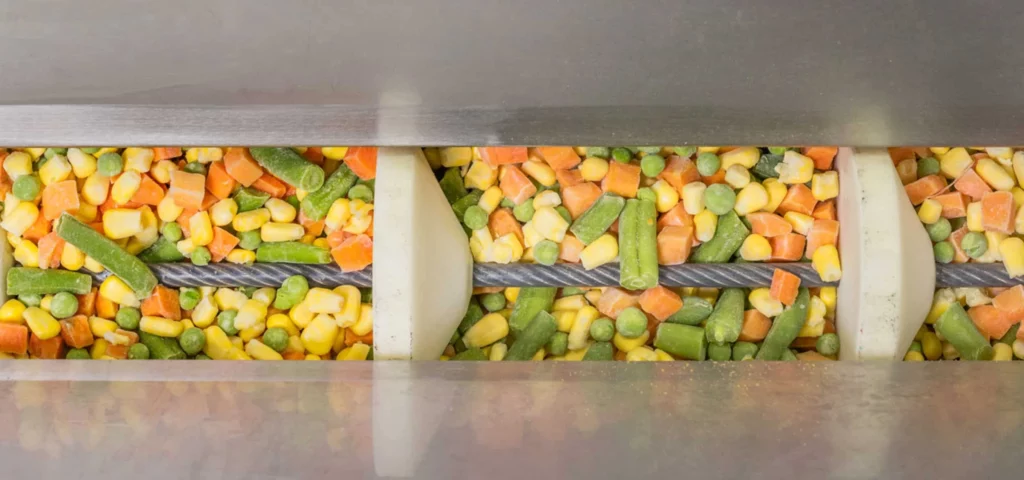
Benefits of Having a Good Frozen Food Conveyor System
Aside from the obvious and expected benefit of being able to move your product from one point to another, there are several other benefits that come with having a good frozen food conveyor system. For starters, it can help you increase your line speeds and, as a result, increase your production capacity.
As mentioned earlier, one of the challenges of conveying frozen food is the risk of product damage. With a conveyor system that is designed specifically for these products, you can minimize the risk of product damage and ensure that your products are conveyed in the best possible condition. Additionally, by investing in a conveyor system for frozen food products, you can reduce the amount of product waste due to damage during the conveying process.
Another benefit of having a good conveyor system is that it can help improve worker safety. When workers don’t have to lift and carry heavy loads of frozen food, they are less likely to suffer from injuries such as back strains.
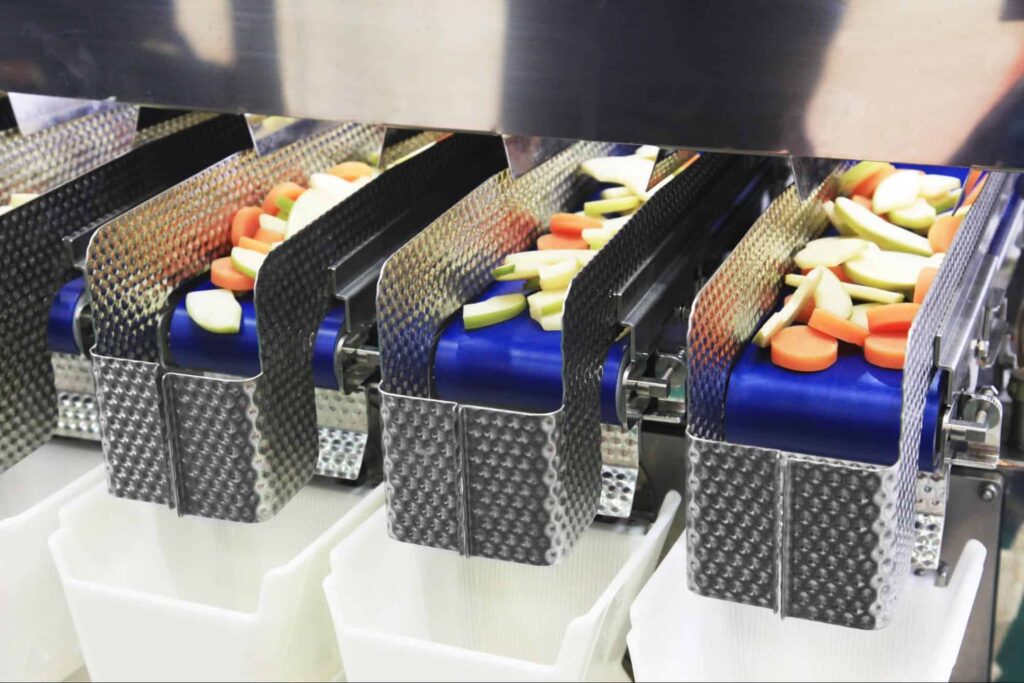
The Right Type of Conveyor
What does it mean to have a “good” frozen food conveyor system? One of the first things to consider is the type of system you need. There are dozens, if not hundreds, of different types of conveyor systems on the market. So, how do you know which one is right for your business? The most common types of conveyors used in the frozen food industry are:
- Belt conveyors – they are made up of two or more pulleys that are connected by a belt. The belt is typically made of PVC or PU and can be either flat or troughed. Some of the disadvantages of belt conveyors are that they can be slow and not suitable for inclines or declines.
- Pneumatic conveyors – unlike belt conveyors, these use air pressure to move product through the conveyor. These types of conveyors are typically used for dry, free-flowing products such as grains, powders, and pellets. However, they can also be used for some frozen food products. Unfortunately, pneumatic conveyor systems are not gentle on the conveyed material and can cause damage, sometimes even severe material damage.
- Chain conveyors – a tubular chain conveyor can be suitable for both frozen and non-frozen food products. These types of conveyors can be faster than a belt conveyor system and can handle more weight. However, the chain in these systems is directly exposed to the conveyed product, which can lead to contamination if the system is not properly cleaned and maintained.
As you can see, none of the traditionally used solutions are ideal for conveying frozen food. However, alongside these three main types of conveyors used for frozen food products, there is one more that actually meets all the specific needs of this industry: the tubular cable and disc conveyor.
Tubular Cable and Disc Conveyor
The tubular drag cable conveyor is similar in design to the tubular chain conveyor – it consists of an enclosed tube through which moves a series of solid circular discs. Instead of being attached and powered by a chain, however, the discs in this system are moved by a cable. The cable in cable and disc conveyors is sealed in nylon jacketing, which not only protects the cable from the product being conveyed but also prevents the product from coming into contact with the cable. This makes this type of bulk material handling equipment much more sanitary than other types.
Advantages of Installing Tubular Conveyors
Tubular cable and disc conveyors offer numerous advantages in the context of frozen food transport. Here are some other benefits of such conveyor systems:
- Gentle conveying – as we already mentioned, the cable conveyor is much gentler on the conveyed material than other types. The evenly spaced discs bracket the transported product or raw material and move it through the enclosed tube without any sudden jolts or changes in direction. This is ideal for delicate frozen products that could be easily damaged.
- Clean-in-place mechanisms – to ease the cleaning process, Cablevey tubular cable and disc conveyors come with clean-in-place (CIP) mechanisms. These enable the system to be cleaned quickly and easily without having to disassemble any of the parts.
- Fully enclosed – as the name suggests, tubular cable and disc conveyors are fully enclosed. There is no risk of product contamination, and it is much easier to maintain a consistent temperature throughout the system.
- Various capacities – thanks to different tube diameters, Cablevey cable and disc conveyors can be used for a wide range of capacities, from 21,000 lbs/h to 80,000 lbs/h.
- Space-saving – unlike a conveyor belt system, which typically needs a lot of floor space, tubular cable and disc conveyors can be installed in a much smaller area. If your facility layout is limited, this could be the ideal solution for your needs.
- Energy-saving – compared to some other systems, tubular cable and disc conveyors use less energy. Using less energy enables you to save on running costs and is also better for the environment.
- Modular design – what Cablevey offers that other manufacturers don’t is a modular design. This means that our industrial conveyor belt for food can be easily customized to the specific needs of your application. We focus on flexibility and seamless integration so your conveyor system can perfectly adapt to the frozen food products you need to transport. Finally, as your business expands, our systems can be easily expanded too.
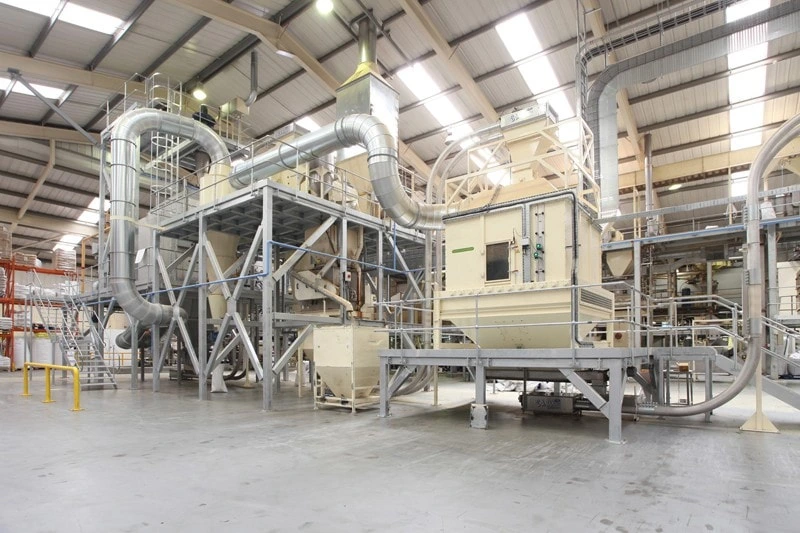
How to Make the Right Conveyor Choice – Understanding Conveyor System Needs
As you delve into the realm of frozen food conveyor systems, it’s crucial to identify the right type for your application. Various factors come into play in this decision-making process. Start by considering the size, weight, and shape of the product. Despite the numerous benefits of tubular cable and disc conveyors, they may not be suitable for all applications. For instance, if you’re handling exceptionally large or sticky products, you might need to opt for a different conveyor system.
Similarly, the product’s shape also matters. A belt conveyor might be the better choice for long or irregularly shaped items. The nature of the material to be conveyed significantly impacts the conveyor system choice. For instance, if you’re dealing with raw meat or other leak-prone products, it’s vital to opt for a system that’s easy to clean, thus ensuring hygiene standards are maintained.
The environment within your facility also influences your selection. You need to account for factors like temperature, humidity, and other conditions. If you’re dealing with frozen food, you’ll need a system that can consistently maintain low temperatures. However, even if you’re not, considerations such as humidity might be important. For instance, if you’re conveying food susceptible to humidity, a system with good sealing to prevent moisture ingress would be crucial.
Capacity is another key determinant. The conveyor system must be capable of handling the throughput required for your operations without faltering. Finally, consider your facility’s layout. For constrained spaces, a tubular cable or disc conveyor might be an excellent choice. Conversely, a more flexible layout could allow for a broader range of conveyor options.
While there are other factors to consider when selecting a frozen food conveyor system, these are some of the most crucial ones. It’s always beneficial to consult with a conveyor specialist to ensure your needs are adequately met.
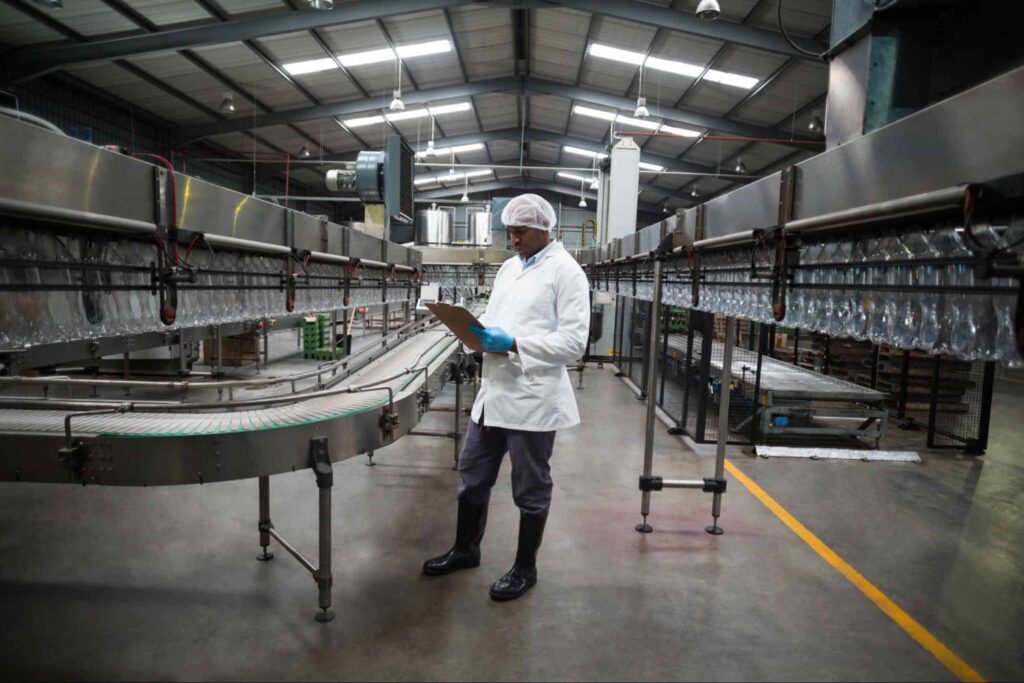
Pick the Right Company to Partner With
With over 50 years of experience in designing and manufacturing tubular cable and disc conveyors, a company like Cablevey Conveyors could be your guide in selecting the most suitable system for your needs. Don’t hesitate to reach out and leverage our expertise. Contact us today for more information and expert advice on everything – from a custom conveyor belt for a warehouse to automation conveyor systems!

